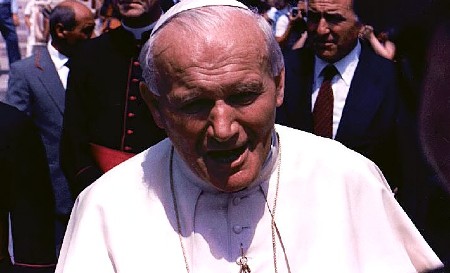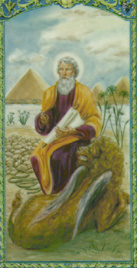 Hi readers, it seems you use Catholic Online a lot; that's great! It's a little awkward to ask, but we need your help. If you have already donated, we sincerely thank you. We're not salespeople, but we depend on donations averaging $14.76 and fewer than 1% of readers give. If you donate just $5.00, the price of your coffee, Catholic Online School could keep thriving. Thank you. Help Now >
Hi readers, it seems you use Catholic Online a lot; that's great! It's a little awkward to ask, but we need your help. If you have already donated, we sincerely thank you. We're not salespeople, but we depend on donations averaging $14.76 and fewer than 1% of readers give. If you donate just $5.00, the price of your coffee, Catholic Online School could keep thriving. Thank you. Help Now >
Archdiocese of Michoacan
FREE Catholic Classes
(MICHOACANENSIS)
Located in Mexico, the Diocese of Michoacan was established in 1536 by Pope Paul III at the instance of the Emperor Charles V, its boundaries to coincide with those of the ancient Kingdom of Michoacan. In 1863 it became an archdiocese, with Léon, Querétaro, and Zamora for suffragans, its limits being at the same time greatly reduced. Its population is about one million, and the principal cities are Morelia, Zitácuaro, Maravatío, Pátzcuaro, Puruándiro, and Piedad in the State of Michoacan, and Acámbaro, Salvatierra, Celaya, Salamanca, and Pénjamo in the State of Guanajuato. The first bishop was the eminent Spaniards D. Vasco de Quiroga (1538-65), one of the greatest missionaries to the Mexican aborigines. Among other bishops of the Spanish period, the following were distinguished for their learning and virtue : Ramírez del Prado, who has been compared to St. Charles Borromeo ; Sánchez de Tagle, who founded the conciliar seminary ( seminario tridentino ) for the diocese in 1770; Fray Antonio de San Miguel, builder of the great aqueduct of Morelia and commonly spoken of as the father of his people. Of the bishops who have governed the Diocese of Michoacan only two have been natives of Mexico, Portugal and Munguía. The latter was named archbishop in 1863. Portugal was the first American ecclesiastic to be named a cardinal by the pope, although he died before receiving the cardinal's hat. Munguía was the author of some very excellent books on law and philosophy, and lived up to his motto: "Lose wealth, but save principles". D.Ignacio Arciga and D. Atenogenes Silva succeeded Archbishop Munguía and, in the epoch of peace which the republic has since enjoyed, have achieved some notable results.
We ask you, humbly: don't scroll away.
Hi readers, it seems you use Catholic Online a lot; that's great! It's a little awkward to ask, but we need your help. If you have already donated, we sincerely thank you. We're not salespeople, but we depend on donations averaging $14.76 and fewer than 1% of readers give. If you donate just $5.00, the price of your coffee, Catholic Online School could keep thriving. Thank you.Help Now >
The library of the Seminary of Morelia numbers 76,000 volumes; there is also a physical laboratory and valuable astronomical apparatus. In every one of the 64 parishes and the 18 succursal parishes of the archdiocese there is at least one school for boys and another for girls. At Morelia the schools are very numerous, the attendance being over three thousand, boys and girls. Celaya, Salvatierra, and Piedad have four parochial schools each, and several other parishes have two. Several charitable institutions are admirably maintained by the clergy. In times of scarcity, when the price of corn goes up, the diocesan authorities follow the example of the great Bishop San Miguel, who, in 1785, with the consent of the cathedral chapter, expended 280,000 pesos for the relief of the people — an enormous sum for those days. During the two last episcopates the improvement has been notable, the number of priests increasing to 348. Hidalgo, Morelas, Iturbide, heroes of the war of Independence, the learned Munguía, the poet Navarrete, and the philosopher Abarca were all born within the limits of the Archdiocese of Michoacan. Morelia, the capital, has some notable buildings, among which may be mentioned the beautiful cathedral, the government buildings, the seminary, the art school (formerly a Jesuit college ), and the college of the Teresianas. In the same city the Christian Brothers, the Salesians, and the Servants of Mary conduct institutions. The classes in the various schools are taught principally by French and Italian professors and Spanish nuns.








 Daily Readings for Thursday, April 25, 2024
Daily Readings for Thursday, April 25, 2024 St. Mark: Saint of the Day for Thursday, April 25, 2024
St. Mark: Saint of the Day for Thursday, April 25, 2024 Prayer for Policemen: Prayer of the Day for Thursday, April 25, 2024
Prayer for Policemen: Prayer of the Day for Thursday, April 25, 2024


